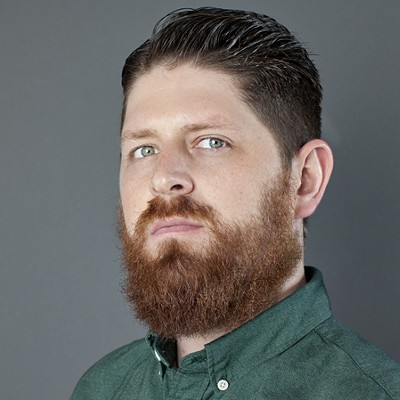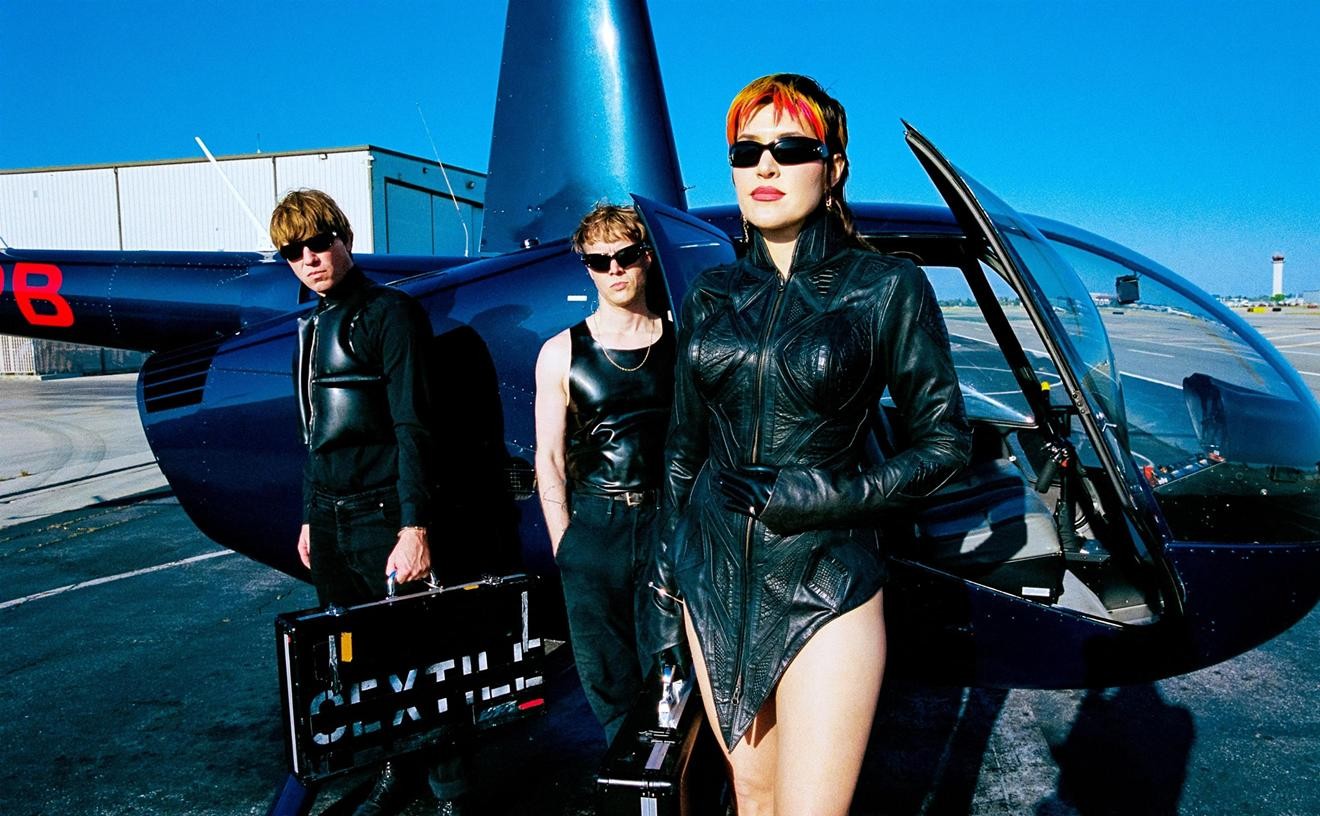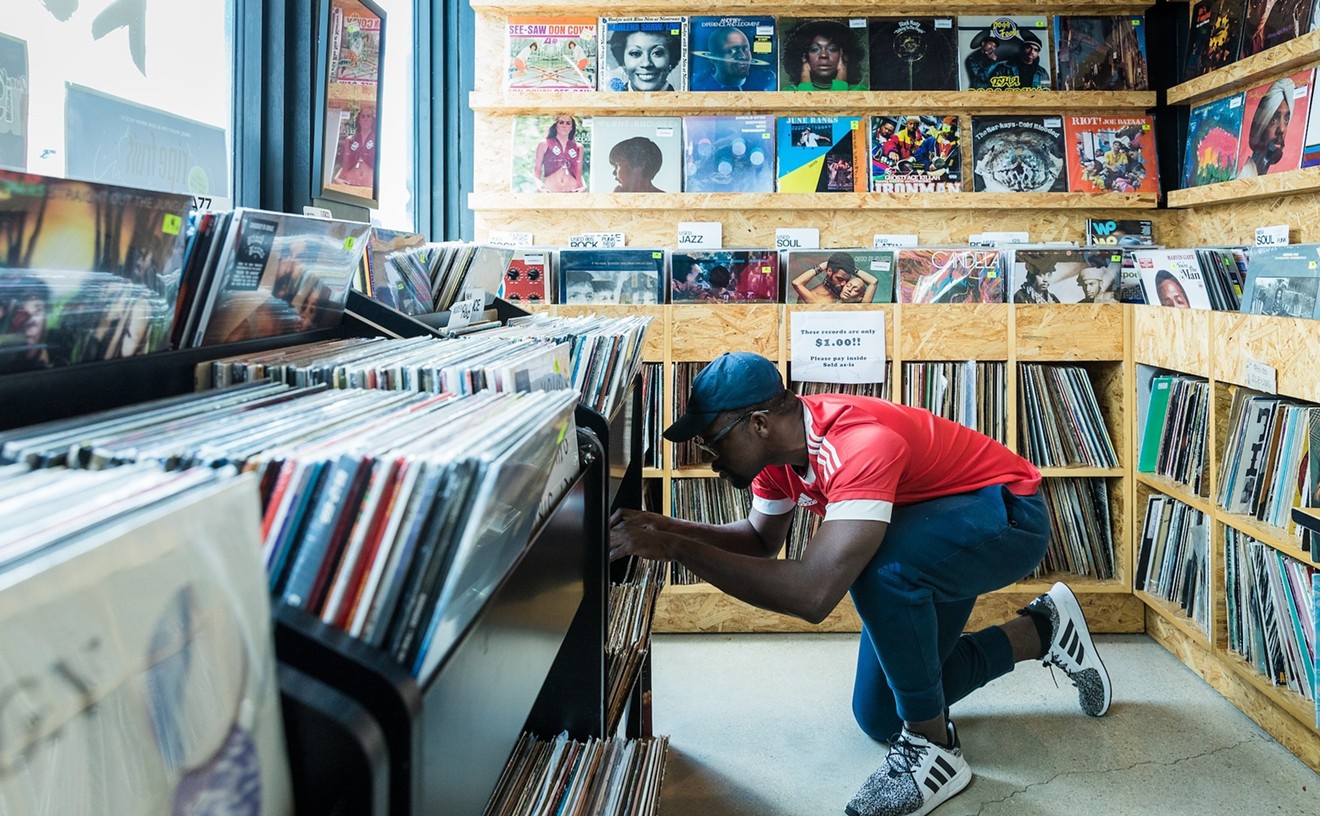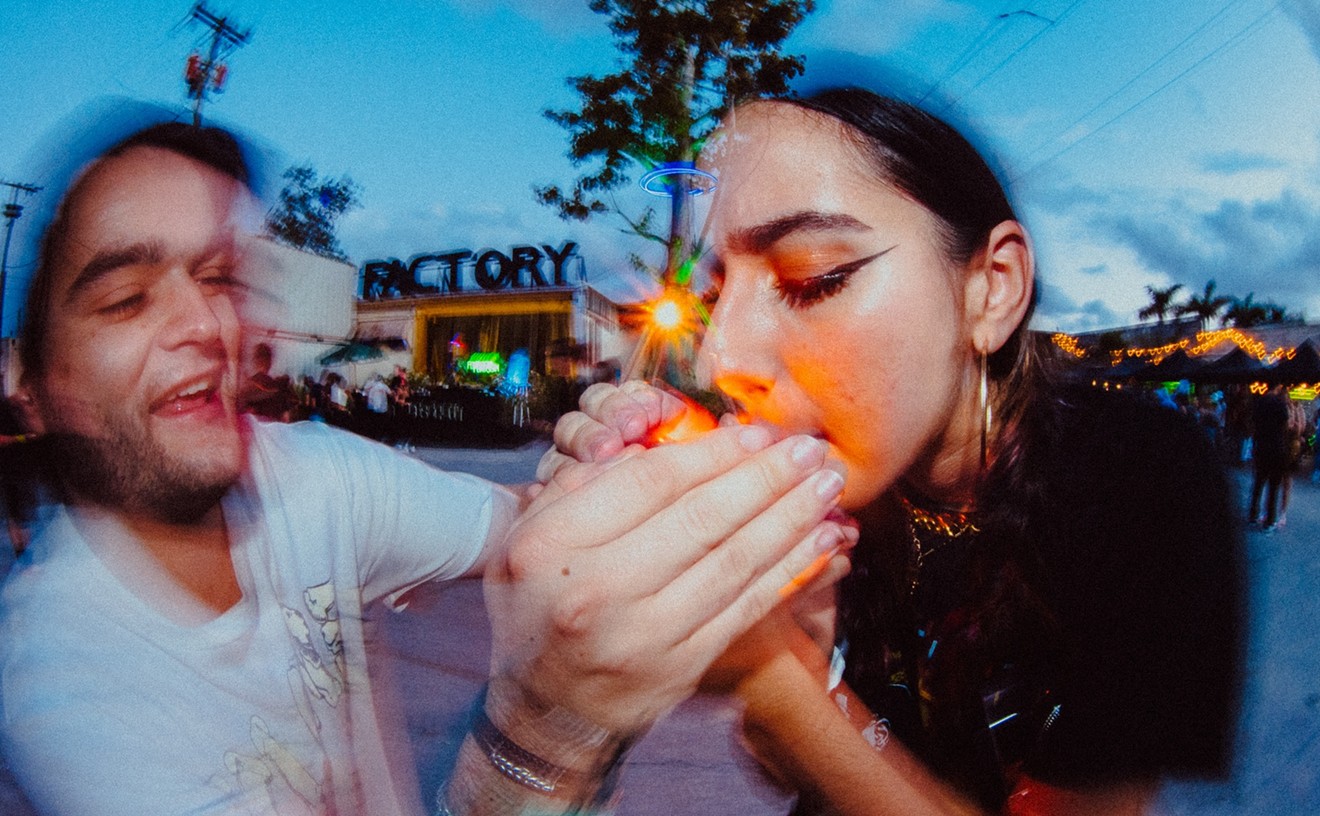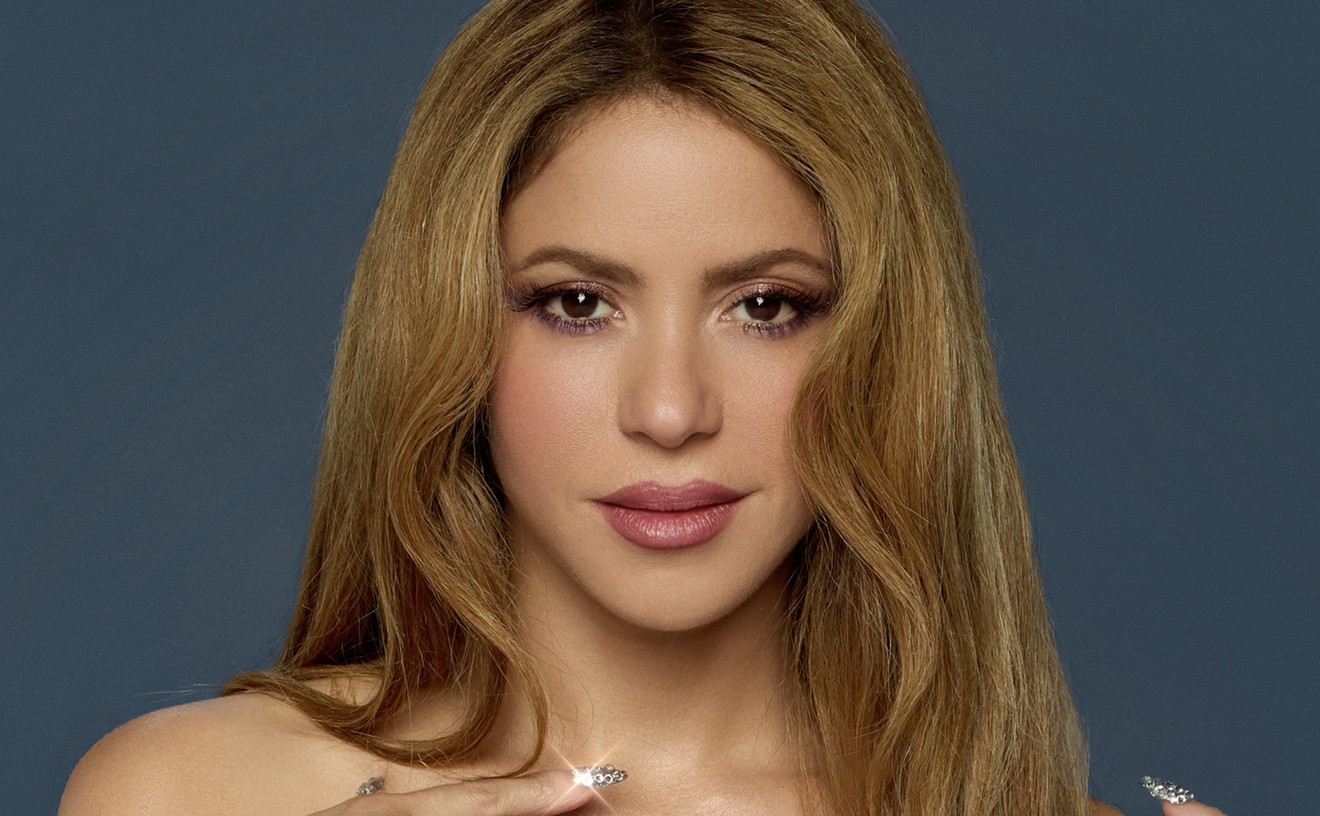For millennia, only a very small slice of the world's human population could legitimately claim to have rocked out to the color spectrum. Of course, we're talking about those special party people with the strange neurological condition known as synesthesia. And, uh, certain recreational weed smokers too.
But now, thanks to a man named MartyParty (born Martin Folb), everyone can enjoy the experience of color as sound. You don't need a uniquely wired brain or a big bowl of the sticky stuff, because this South Africa-bred, Brooklyn-based DJ, producer, and pot aficionado has crossbred dubstep with hip-hop and given birth to a cross-sensory kind of music called purple.
Eager to hear new hues, New Times called MartyParty to talk making purple, smoking purple, and defining purple.
New Times: What goes down at a MartyParty? Dirty stuff? Clean stuff? Crazy stuff?
MartyParty: It gets pretty insane. It's super-high-energy, really intense. I'll play, like, 55 tracks in 90 minutes.
People will sometimes use a word like dubstep to describe your sound. But you prefer the term purple. What exactly does that mean?
Well, we're in this transition phase with genres. No one really knows what the hell anything is. And you know, when I release music, I have to put it into iTunes and I have to pick an available genre. But I call my music purple. It's a cross between hip-hop and dubstep.
Because dubstep came from the UK, it's got those dark rhythms, dark tones, and dark intentions. But purple is more hip-hoppy, sexy, crunky, high-energy, and more emotional than the English stuff.
And I came up with the word purple because I smoke a lot of purple weed. I've always had that nickname, either Daddy Purple or Grandpa Purple. So I just picked it up. And it stuck.
You've described your style as upbeat and fun. Why shouldn't dance music take itself too seriously or get too dark?
I think a lot of UK dubstep comes from a gray, weathered, mining town kind of place, like Croydon. If you've ever been there, it's pretty depressing. They introduced new ways to make bass, especially the wobble. And I think that's what we've all taken from it — double time, minimal beats, wobble bass, and the arrangements. But dubstep's actual intention, the chords, the samples, and the vibe don't match the kind of parties that most people want, especially girls.
So I try to mix it up and make it much more woman-friendly. I'll have something catering to the brostep guys. But then I'll also have something sexy for the girls. And what I've found is a lot of women want to get down to dubstep. But they just need a break now and again. That's part of the purple arrangement formula. It gives people a break before diving back into the hard stuff.
So are you working toward a more dynamic form of dubstep?
You know, I grew up with a lot of house and trance music. So I'm a huge fan of melodic electronic stuff. And when I'm writing songs, I always want to add those layers, where plenty of people just rely on the bass line and the beats. I like music. I like harmony.
You point out the connection between dubstep and the geography that gave birth to it. Is there a place, real or imaginary, from which purple sprung?
I started making music in Puerto Rico, where I wrote the Pantyraid album The Sauce. That's when I invented purple music. Songs like "Worship the Sun" and "Beba" were really the beginnings of purple.
But I lived in San Francisco. And then I moved from California to New York three years ago, so I would say it's pretty bicoastal. It definitely has a home on both the West Coast and the East Coast. I can't really see it just belonging to one or the other.
Living in Cali, you worked as a software programmer, right?
Oh, yeah. I went to college and got a degree in computer science from the University of Capetown. And when I was 23, I got recruited into a dot-com company in San Francisco. That's how I got to the States. And I worked in that company for 15 years. I went through the whole dot-com boom and bust. And at the end of that cycle, I was like, "I'm out of here."
I went to Costa Rica, surfed for a year, and then I came back to the States as a music producer. I completely turned my life around.
In many ways, being a programmer and a professional party-starter seem like totally opposite occupations. But there must be certain similarities.
You have no idea how many people in the electronic music industry are software engineers. Deadmau5, who's a friend of mine, used to write code for a living. We all used to be code junkies.
Producing music these days is an intense software experience. You have to be a complete nerd. It's not a rock band type of profession. You're sitting down in front of a computer for 16 hours a day, managing files, working with presets and knobs, coding, and adjusting values. It's a lot of mouse work and a lot of tedious computer time.
At the end of the day, it's just like writing a program and making a file. And that file is the music. It's what gets sold online and what you play in your sets. There's a significant parallel. And that's why a lot of up-and-coming producers are just real nerdy guys.
Now, purple isn't just a genre. It's an album too. You recently released a new record titled Purple. Was it conceived as some sort of core stylistic statement?
Here's the way it happened: I got off tour and returned to my house in Brooklyn. It was just the beginning of the purple concept. You know, people were asking me: "What's purple?" And promoters were putting purple on the flyers.
I had ten days before hitting the road again. So I wanted to sit down, write, and record as many flavors of the purple genre as possible. I wanted to demonstrate its flexibility and how it can go from sexy and hip-hoppy to hardcore and dubsteppy.
You know, I got a big bag of weed. I sat down in my studio for ten days. And I banged out the album. Without a doubt, people will know purple if they just listen.


